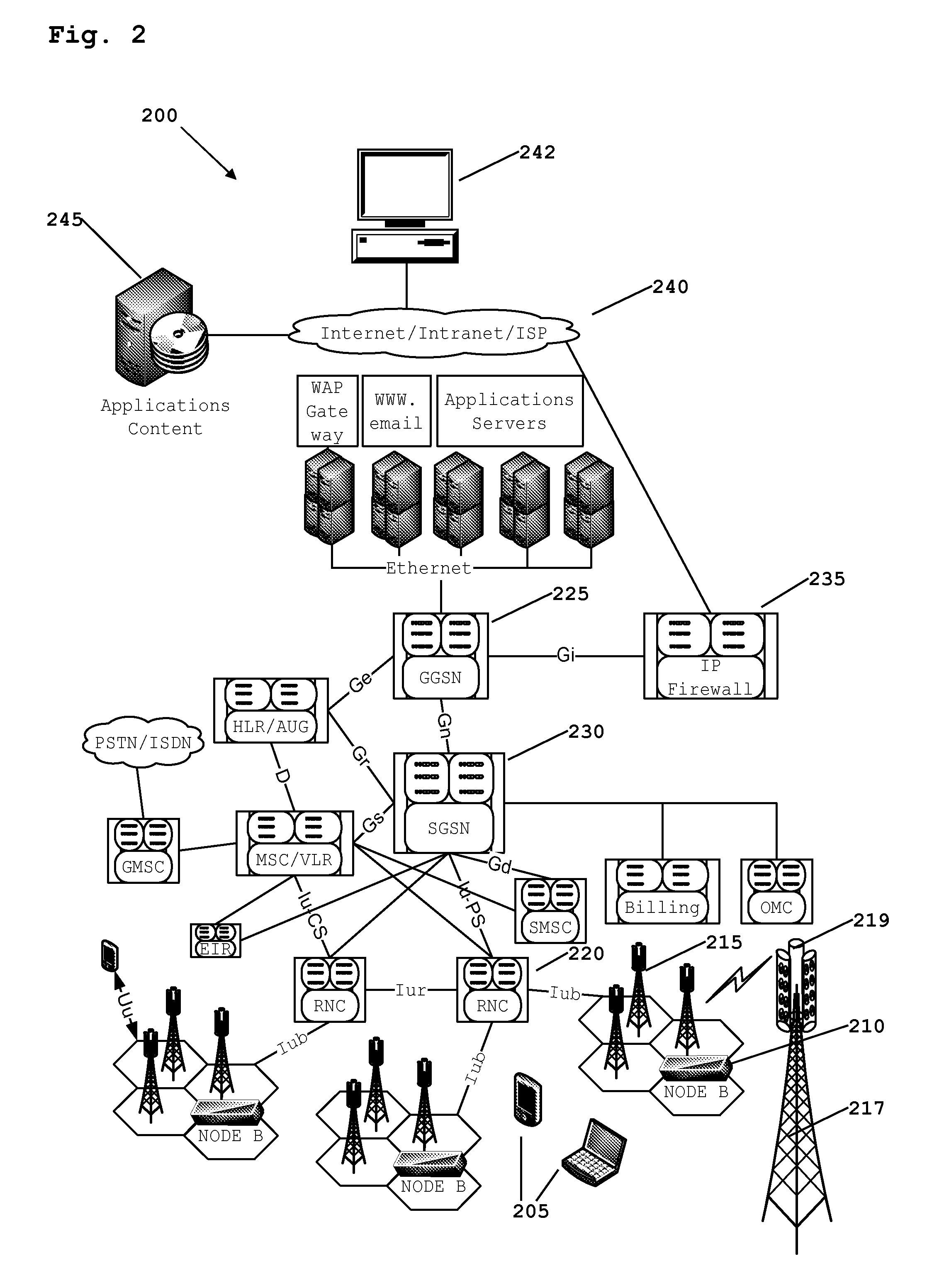Wireless network element and method for antenna array control
- Summary
- Abstract
- Description
- Claims
- Application Information
AI Technical Summary
Benefits of technology
Problems solved by technology
Method used
Image
Examples
Embodiment Construction
[0057]Many air interface standards exploit multiple access techniques using a common uplink or downlink carrier frequency. These include wideband code division multiple access (WCDMA) and orthogonal frequency division multiplexing (OFDM) based air interface protocols. As a result, multiple users may access the same Node B base station simultaneously. In existing systems, discerning angular user density using an antenna array and beam-forming system is not practical since a full demodulation process would be required for multiple narrow spatial beams. Furthermore, a demodulation only process would not help in the detection of interference sources within the sector. Embodiments of the invention employ a power scan method, where potential interference may be identified and spatially filtered prior to the demodulation process.
[0058]In contrast to known antenna array and beam-forming architectures, where only one beam (transmit or receive) is processed, embodiments of the invention utili...
PUM
 Login to View More
Login to View More Abstract
Description
Claims
Application Information
 Login to View More
Login to View More - R&D
- Intellectual Property
- Life Sciences
- Materials
- Tech Scout
- Unparalleled Data Quality
- Higher Quality Content
- 60% Fewer Hallucinations
Browse by: Latest US Patents, China's latest patents, Technical Efficacy Thesaurus, Application Domain, Technology Topic, Popular Technical Reports.
© 2025 PatSnap. All rights reserved.Legal|Privacy policy|Modern Slavery Act Transparency Statement|Sitemap|About US| Contact US: help@patsnap.com



